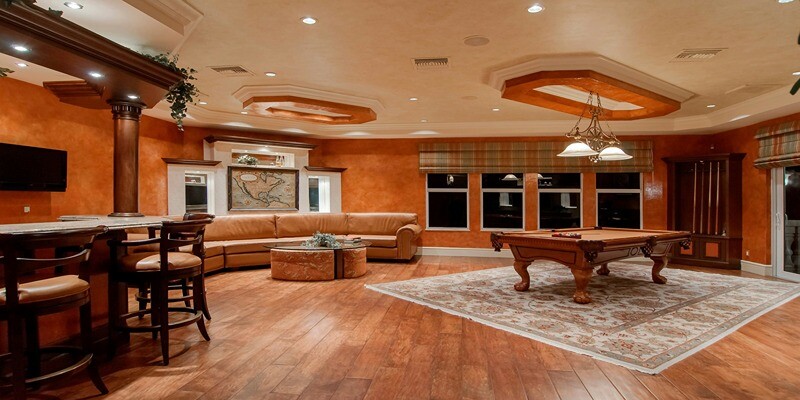Dealing with thinning hair can be tough, and many opt for hair extensions as a quick fix to add volume and length. However, while extensions may seem like an easy solution, they often come with significant downsides. Hair extensions can cause damage to your natural hair, affect scalp health, and require costly and time-consuming maintenance.
Moreover, they offer only a temporary solution and can sometimes look unnatural. This article explores why hiding thinning hair with hair extensions might not be the best idea and highlights the potential drawbacks you should consider before deciding.
Hair extensions are synthetic or natural hair strands that are added to a person's existing hair to create a fuller, longer look. They come in various forms, including clip-ins, tape-ins, sew-ins, and micro-links, each offering different levels of permanence and style flexibility. Extensions are designed to blend seamlessly with your natural hair, enhancing volume and length.
Hair extensions can be used for fashion purposes, to add highlights or color without chemical treatments, or to address issues like thinning hair. Properly applied and maintained, they can significantly change a person's appearance, offering a temporary or semi-permanent solution for various hair concerns.
Hiding thinning hair with hair extensions involves using various types of extensions to cover sparse areas. Options include clip-ins, tape-ins, sew-ins, and micro-links, all designed to blend consistently with your natural hair. These extensions can create the appearance of fuller, thicker hair, making them an attractive option for those experiencing hair loss.
However, it's crucial to carefully consider the pros and cons. Extensions can damage natural hair, cause scalp issues, and require significant maintenance.
Here are five reasons why using hair extensions to hide thinning hair may be a bad idea:
Hair extensions can significantly damage natural hair, especially if not applied correctly. The added weight of extensions can stress hair follicles, leading to breakage and hair loss. This is particularly concerning for those with thinning hair, as their strands are more delicate and prone to damage. Different types of extensions pose varying levels of risk.

Clip-ins, though less harmful, can still cause issues if not removed gently. Tape-ins and sew-ins offer more security but can increase stress on the hair. Micro-links, which provide a natural look, can also lead to breakage if not properly maintained. Ultimately, the potential for damage makes extensions a risky choice for those with already fragile hair.
Your scalp plays a crucial role in the health of your hair. Extensions can compromise scalp health by restricting airflow and causing buildup. This can lead to conditions like seborrheic dermatitis, where the scalp becomes red, flaky, and itchy. Bacteria and fungi can thrive in this environment, leading to infections that further harm your scalp and hair.
Proper scalp hygiene is essential when wearing hair extensions. Regular washing and conditioning are necessary, but care must be taken to avoid tangling the extensions. Using a clarifying shampoo can help remove buildup, but overuse can strip natural oils, causing dryness and irritation.
The financial and time commitment required for hair extensions can be substantial. High-quality extensions and professional applications can be expensive, with regular maintenance appointments adding to the cost. Extensions need to be adjusted as your hair grows, typically every 6-8 weeks, to prevent tangling and ensure a natural look.
Maintaining hair extensions at home requires special products and tools in addition to salon visits. Using the wrong products can damage both the extensions and your natural hair. For many, this ongoing investment can become burdensome, especially if the desired results are not achieved.
Hair extensions provide a temporary boost in volume and length but do not address the underlying issues causing hair thinning. Hair loss can result from various factors, including genetics, hormonal changes, stress, and medical conditions. Instead of masking the problem, its important to seek treatments that target these root causes.

Options like topical treatments (e.g., minoxidil), oral medications (e.g., finasteride), and lifestyle changes (e.g., improved diet, reduced stress) can promote hair growth and improve hair health. Consulting with a dermatologist or trichologist can help identify the best course of action for your specific situation.
Achieving a seamless blend with hair extensions can be challenging. Factors like color, texture, and length must match perfectly for a natural look. Even minor discrepancies can make extensions noticeable, drawing unwanted attention to the very issue youre trying to hide.
Professional application is key to a natural appearance, but not all stylists are equally skilled. Researching and finding an experienced stylist who specializes in extensions is crucial. However, even with professional help, results can vary, and maintaining the look requires regular touch-ups and adjustments.
Here are five alternative solutions for hiding thinning hair without using hair extensions:
Volumizing Shampoos and Conditioners: Use products that add volume and thickness, like those containing biotin and keratin.
Scalp Concealers and Hair Fibers: Apply products that match your hair color to cover thinning areas and create the appearance of fuller hair.
Haircuts and Styling Techniques: Choose layered cuts and add volume with styling methods like blow-drying upside down and volumizing mousse.
Wigs and Toppers: To cover thinning areas, opt for wigs or hair toppers. These blend well with natural hair and come in various styles.
Diet and Supplements: Improve your diet and consider supplements with protein, iron, biotin, and vitamin D to support hair health and growth.
Hair extensions can offer a quick and seemingly easy fix for thinning hair, but they come with several significant drawbacks. They can damage your natural hair, compromise scalp health, and require substantial time and financial investment. Moreover, they provide only a temporary solution and can sometimes result in an unnatural appearance.
Instead of relying solely on hair extensions, its important to explore treatments that address the root causes of hair thinning. By focusing on long-term solutions and maintaining a healthy scalp and hair care routine, you can achieve better and more sustainable results.

By Darnell Malan/Sep 03, 2024

By Korin Kashtan/Aug 28, 2024

By Juliana Daniel/Sep 04, 2024

By Triston Martin/Aug 28, 2024

By Tessa Rodriguez/Sep 04, 2024

By Alison Perry/Aug 27, 2024

By Elva Flynn/Aug 28, 2024

By Nancy Miller/Aug 27, 2024

By Korin Kashtan/Sep 01, 2024

By Maurice Oliver/Aug 31, 2024

By Triston Martin/Aug 29, 2024

By Sean William/Sep 02, 2024